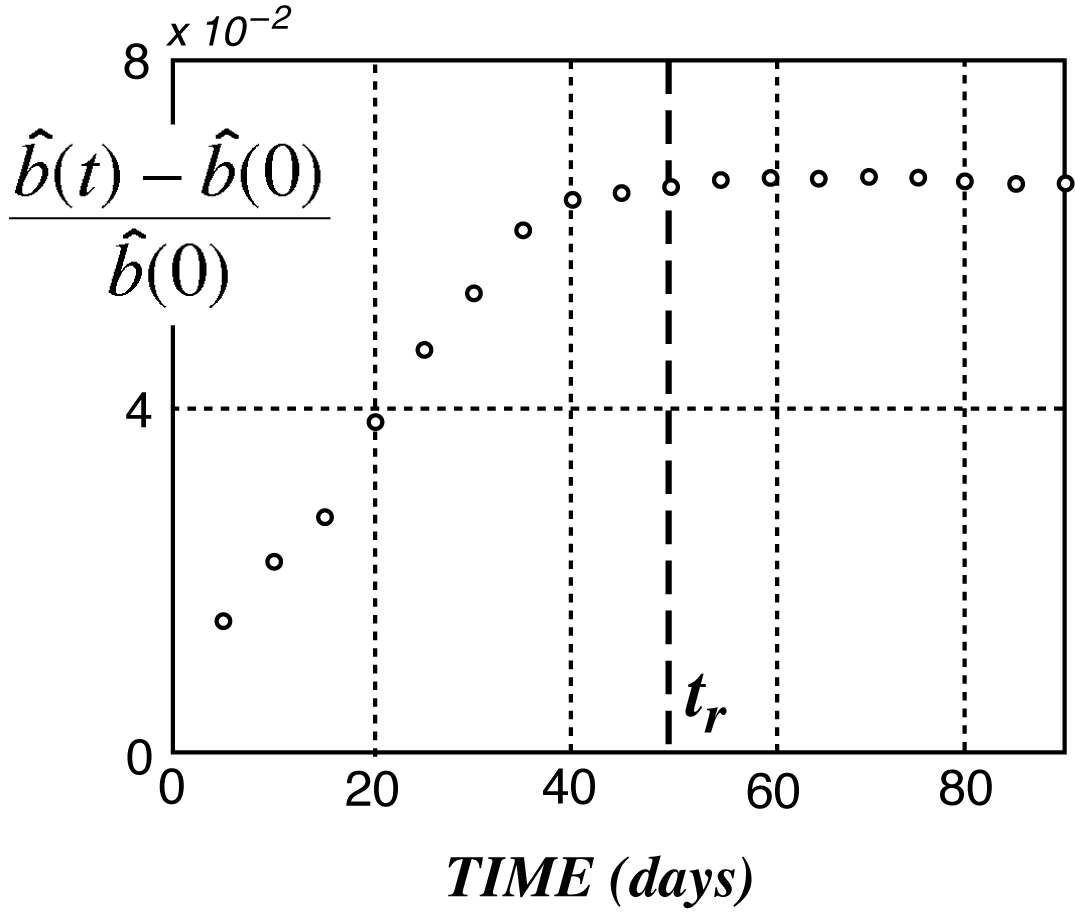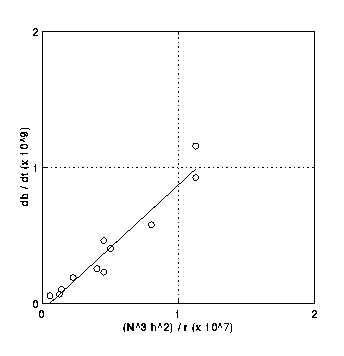
The evolution of the integral properties of a column of ocean which, having become baroclinically unstable, subsequently goes on to exhibit finite amplitude instability (beginning the process of breaking-up into columns, restratifying the interior and carrying detatched fragments of the chimney away) depends on the interplay between surface buoyancy losses, B, and the lateral buoyancy flux by baroclinic eddies as follows

where

and

the baroclinic eddy buoyancy flux.


It also follows that the rate of change of chimney buoyancy is set according to

Plotting graphs of mean chimney buoyancy as a function of time (Fig.4(a)) enables us to determine the constant c_e empirically.


The slopes of Figs.4 (b) and (c) suggest c_e=0.027. Returning to eqn.(3), this would imply a constant of proportionality of 4.8. Visbeck et al. (1995) find 3.9 plus or minus 0.9; Whitehead et al. (1995) find 4.6 plus or minus 0.5.




Back to the top